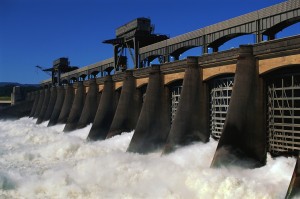The infrastructural turn in migration management refers to the change from governing mobility through the denial of citizens’ right to migration to governing through citizens’ supposedly free choices and rational calculations in response to the logistics of mobility.
Blocking and channeling: policy and regulation
Take international labor migration from China as an example. Between 1949 and the beginning of the 2000s, the Chinese state either prohibited or directly administered outmigration. Ordinary citizens either had to be privileged enough to be selected to join government projects or turn to human smugglers. In either case there was no need, nor possibilities, for an individual to acquire legality.
 From the late 1980s, international migration on individual initiative was first allowed and then encouraged, while the state at the same time put in place detailed regulations to set the procedure for outmigration. The institutional and policy infrastructure for migration was simultaneously the infrastructure for migration regulation. Chinese policy makers often referred to this shift as one from a strategy of blocking (du) to an emphasis on channeling (shu). The hydraulic metaphors evoke the legend that Yu the Great (c. 2200 - 2100 BC) tamed flooding through canals that worked with the flows instead of dams against the river. Channeling is simultaneously facilitating and containing.
From the late 1980s, international migration on individual initiative was first allowed and then encouraged, while the state at the same time put in place detailed regulations to set the procedure for outmigration. The institutional and policy infrastructure for migration was simultaneously the infrastructure for migration regulation. Chinese policy makers often referred to this shift as one from a strategy of blocking (du) to an emphasis on channeling (shu). The hydraulic metaphors evoke the legend that Yu the Great (c. 2200 - 2100 BC) tamed flooding through canals that worked with the flows instead of dams against the river. Channeling is simultaneously facilitating and containing.
From slave trade to assisted outmigration
The infrastructural governance of mobility is not entirely new. The migration of indentured Asian labour between the 1830s and the 1910s was probably the first major global experiment of infrastructural governance. As compared to the slave trade, that was primarily a matter of physical capturing and transport, indentured labour migration was managed through regulations and new physical facilities. The regulations included those over recruitment procedures, employment relations, health monitoring, transport conditions; facilities include depots, detention houses and quarantine centres. The replacement of indentured migration by so-called free passage led to a more sophisticated regulatory infrastructure, especially on the receiving side.
A good part of the 20th century, however, saw little development in migration infrastructure. Migration was either unregulated (e.g. cross-Atlantic migration), unregulatable (e.g. refugees), administered by the state (e.g. guestworker programmes) or, for the vast majority of the world population, simply unpermitted. In Asia, migration infrastructure developed again in the 1970s with increasing labour migration to the Gulf States and then other parts of the world. The Philippines stood out as a typical example, where multiple governmental and non-governmental agencies were set up and regulations put in place specifically aimed at assisting and monitoring labour outmigrants.
Drivers of the infrastructural turn: despotic polity to regulatory regime
The infrastructural governance of the Chinese labour migration in Asia experienced a significant leap forward in the early 2000s. There were at least two reasons for this.
First, after two decades of rather single-minded market-oriented economic reform, in 2003 the Chinese state introduced new policy thinking that emphasized social welfare and protection. For this purpose, the leadership has since 2004 repeatedly called for strengthening the Party’s “governing capacity” (zhizheng nengli), which basically meant infrastructural power in Mann’s terms (1984). This state needed strong infrastructure in place in order to enable, protect and regulate individuals, including those seeking jobs overseas.
 In the case of labour outmigration, the state allowed private companies to recruit workers on behalf of overseas employers in order to maximize overseas job opportunities, banned government agencies from commercial recruitment, and standardized and streamlined the procedures for outmigration. These measures opened up many more channels for legal migration than before, while making illegal migration and document forgery nearly impossible.
In the case of labour outmigration, the state allowed private companies to recruit workers on behalf of overseas employers in order to maximize overseas job opportunities, banned government agencies from commercial recruitment, and standardized and streamlined the procedures for outmigration. These measures opened up many more channels for legal migration than before, while making illegal migration and document forgery nearly impossible.
Second, on the receiving side, the infrastructural turn was driven by a tension between the fragmentation of labour management and the continuing centralized regulation of cross-border movements. Far from heading to “global cities,” most migrant workers in the destination countries studied (Japan, Singapore, and South Korea) took up manual jobs in private, small low-end enterprises located in remote areas. Each employer needed a very small number of migrants. When the employment of migrant labour was dispersed and fragmented, the management of immigration remained a prerogative of the central government. Unlike managing project-tied, collective labour deployment, the receiving states now had to develop elaborate and nimble infrastructure to channel, follow, monitor and control the movements of particular individuals.
The infrastructural governance of labour mobility in east Asia had at least four characteristics:
- the individualization of the subject
- the generalization of the method
- the distancing of government and the migrant and
- a qualified faith in a spontaneous order.
Individualization of the subject means that the state took as the main subject of regulation individual migrants, instead of the project-tied teams or collective (primarily work units) to which the individuals belonged. Generalization of the method refers to the reliance on predicable, generally applicable legislation and regulations, as opposed to case-specific political decisions. Distancing refers to infrastructural governance aimed at regulating from afar rather than through direct intervention in the subject’s daily life. This is, in turn, associated with the assumption that migration would become self-correcting and self-regulating if proper channels were in place. Thus, there was a qualified faith in the spontaneous nature of the order, which is central to liberal thinking.
The infrastructural turn in China was part of the general, albeit highly uneven and partial, transformation of the state from a despotic polity to a regulatory regime. In this process, the state simultaneously withdrew from certain domains and introduced new regulations, simultaneously freeing social life from state control and penetrating social life more deeply and nimbly.